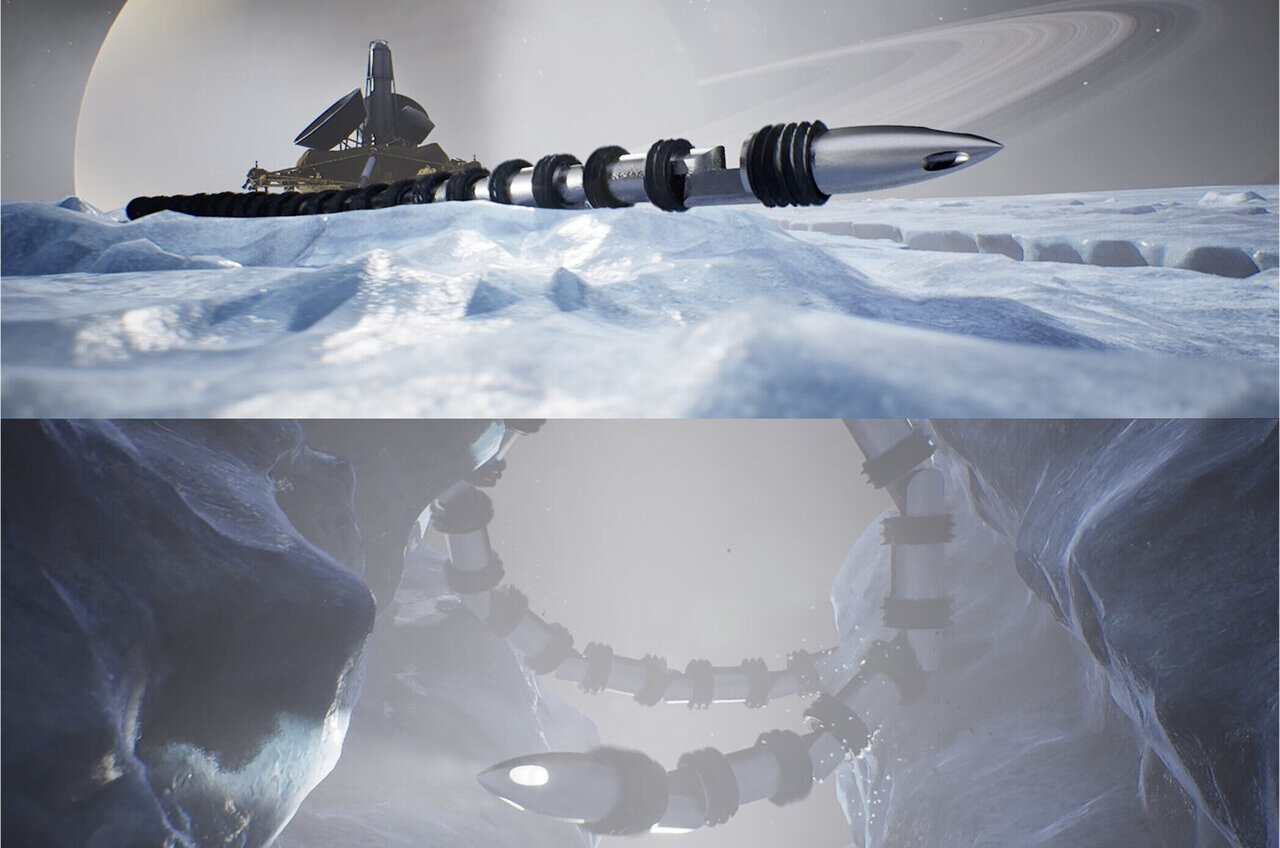Unveiling the EELS: A Pioneering Design for Space Exploration
Scientists from the California Institute of Technology’s Jet Propulsion Laboratory, in collaboration with Carnegie Mellon University, have introduced a groundbreaking snake-like robot named Exobiology Extant Life Surveyor (EELS). This robotic design is aimed specifically for traversing and investigating the icy surfaces of Enceladus, one of Saturn’s moons known for its complex terrain of ridges, craters, and potentially life-sustaining subterranean oceans. The EELS robot, adept at navigating these harsh environments, represents a significant step forward in the quest to discover extraterrestrial life.
Technical Marvels and Mission Objectives of the EELS Robot
Designed for durability and autonomous navigation, EELS measures about 4 meters in length and features a modular body that mimics the flexibility of a snake. Each segment of the robot is equipped with ball joints for agile movement and a corkscrew exterior to aid in locomotion across slippery ice. Equipped with sensors and cameras, EELS can collect and analyze ice samples for organic materials, a crucial task in assessing the moon’s habitability. This robot could revolutionize how scientists explore icy worlds, providing new insights into environments that were once considered unreachable.
Future Prospects and Challenges
Despite the promising capabilities of the EELS robot, the team faces significant challenges, particularly the extreme conditions of Enceladus, where temperatures plummet to –198°C. The robot’s design includes features to withstand such extremes, and it has been rigorously tested in Earth’s own extreme environments, including Canada’s Athabasca Glacier. As this project progresses, the potential to uncover signs of life on Enceladus grows, potentially expanding our understanding of life in the universe. This venture not only pushes the boundaries of robotic engineering but also of our quest to find life beyond Earth.
